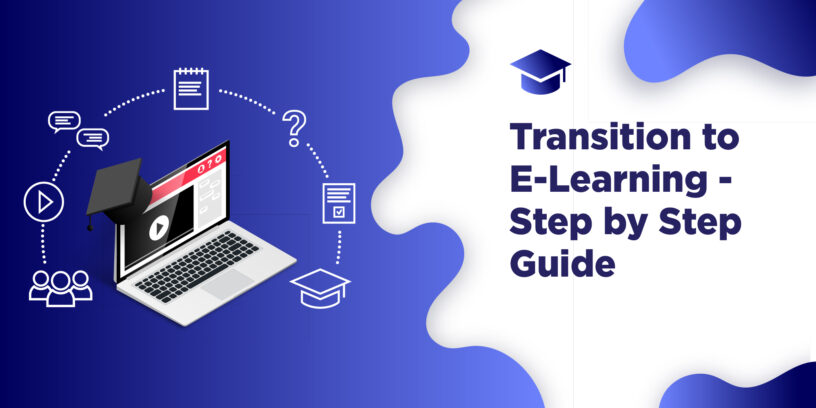Make the transition simpler for both you and your employees!
You already have an in-person training programme in place, but you realize it’s time to turn these instructor-led training into an eLearning training programme that employees can access from any location. In seven simple stages, here’s how to transform in-person training to eLearning.
#1 Make a Plan
Perhaps you are transitioning to eLearning because you have recently made the decision to transition to a long-term remote workforce. Perhaps you are making a conscious decision to streamline your training materials in order to make them more responsive to the demands of your staff. Whatever the cause, it is critical to begin with a short-term plan.
This may imply beginning with virtual instructor-led trainings using the information you already have as your team works to develop a comprehensive online training plan. Consider this a sort of orientation time where staff can get acquainted to new platforms with the help of a trainer. Because mastering the technology is one of the key requirements of eLearning, this might be a very helpful initial step.
#2 Perform a Need Analysis
When you transfer training online, this is an excellent opportunity to conduct a training needs analysis to assess where you are.
Consider how many staff require training, topics to begin with, and what is outdated in your present training. At this time, you can also shift your focus to another area of need.
#3 Development Phase
You must have a development plan in place before proceeding. Here, we go over the fundamentals of creating an employee training plan.
You’ll most likely begin with your budget. Before you proceed, ensure that your management is on board and willing to devote resources or outsource (time, money, and materials) for transforming in-person training to virtual training.
Once you’ve established a budget, decide which subjects or courses to develop initially (based on your training requirements analysis). Create a development and implementation timeline based on the next six steps.
Lay out each stage of development and carefully match it to your targeted training results.
#4 Policy, Procedures & manuals
Longer manuals and training guides can serve as the foundation for eLearning programmes even if you won’t require as many printed copies of them.
For just-in-time performance support or microlearning, for example, policies and procedures that don’t change can be transformed into other formats. Many of the previously performed step-by-step problem-solving activities can be transformed to various formats, such as checklists. This process reduces development costs and saves time.
#5 Suitable E-learning platform
A learning management system (LMS) is software that enables a company to store, administer, deliver, and monitor all training-related content. An LMS may help an organization with e-learning by simplifying the process and also boosts employee engagement and productivity. Therefore, it is very imperative to choose the right LMS platform for your E-learning.
#6 Recognize the method required
Now that you’ve chosen a suitable platform and determined your needs. Decide which training formats work best for your content right now.
When you only need to concentrate on a single activity, for instance, microlearning is most effective. They can get the information they require right away thanks to performance support. Employee engagement and motivation can be maintained by utilising gamification. For more intricate themes that can be applied to the workplace, longer courses with activities that fit into a worker’s day are ideal.
Regardless of the approach, it’s critical to acknowledge (and accept) the fact that every person learns differently. The best possibility for converting in-person training to virtual training is to carefully match the approach to the content and provide employees with options for learning.
#7 Develop E-learning courses
You don’t have to create eLearning from scratch. Even while eLearning can be entirely internalized, many businesses choose to co-develop with a partner for employee training. Some businesses decide to completely outsource this. For instance, NIST Global has collaborated with a range of companies, both big and small, to transform existing instructor-led training into eLearning (or create totally new trainings).
NIST’s E-Learning solutions
We are a reputable provider of corporate eLearning solutions in India! To help you achieve your company goals and maximize the potential of your workforce, NIST is dedicated to offering corporate LMS Platform and E-learning solutions that are device-friendly. Among all other firms, we distinguish out because we offer the greatest services for developing eLearning content.
Call our experts at +91 8754465588 or send us an email at info@nistglobal.com to discuss developing e-learning course content for your company.














Leave a Reply